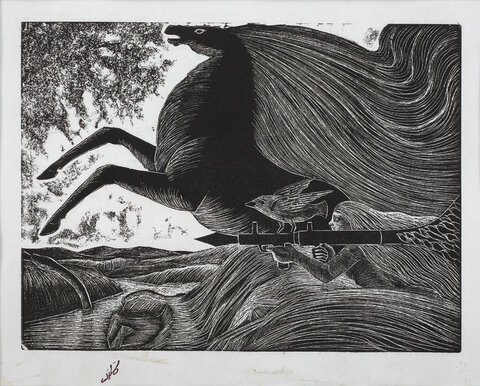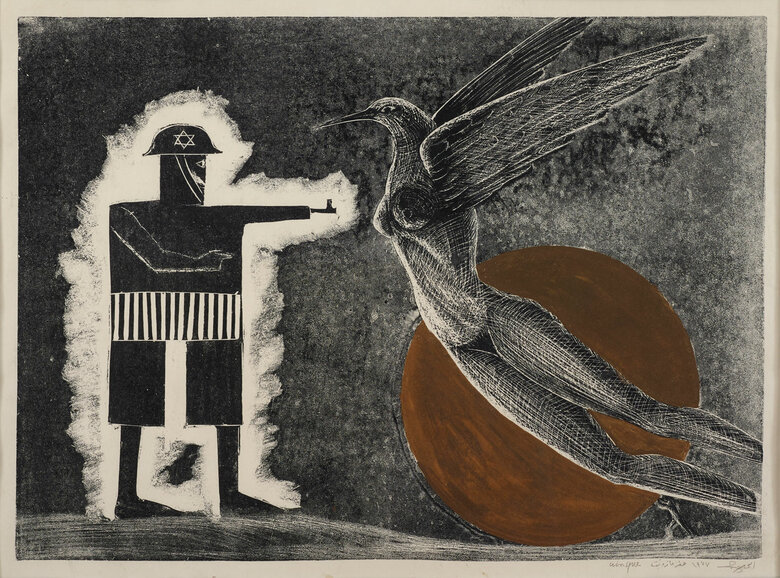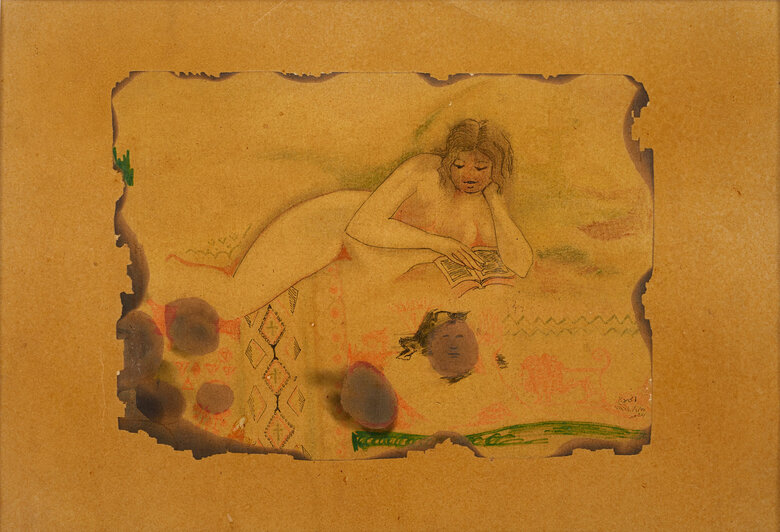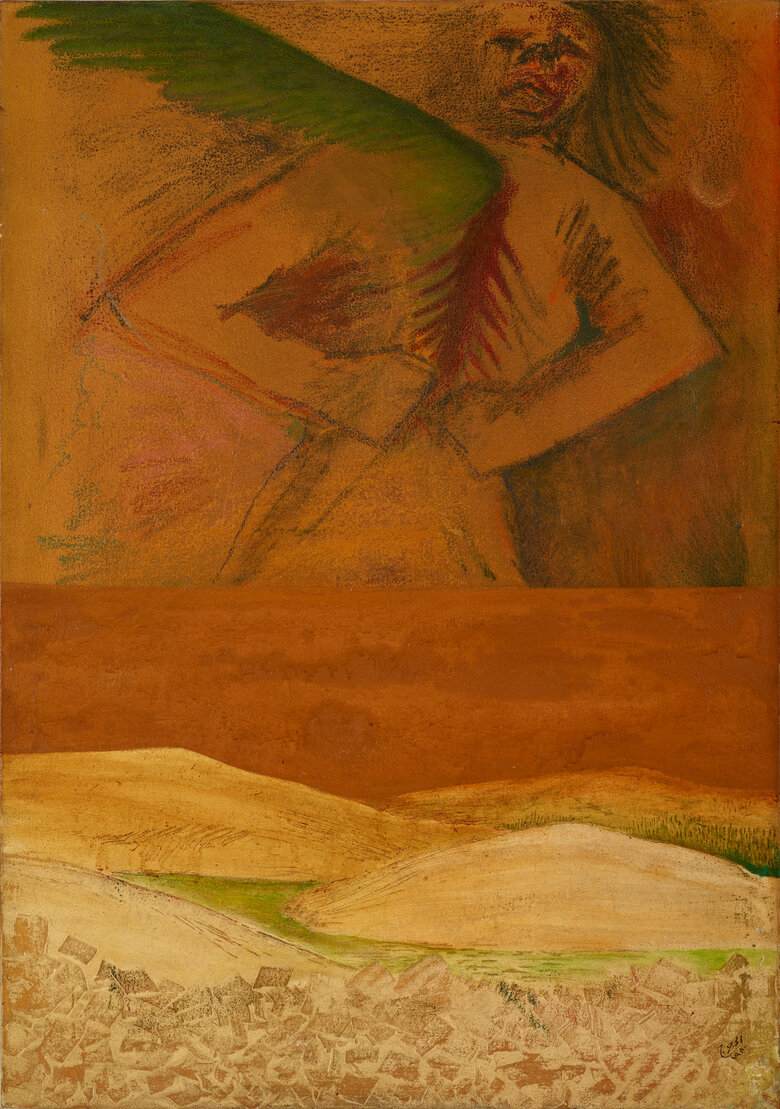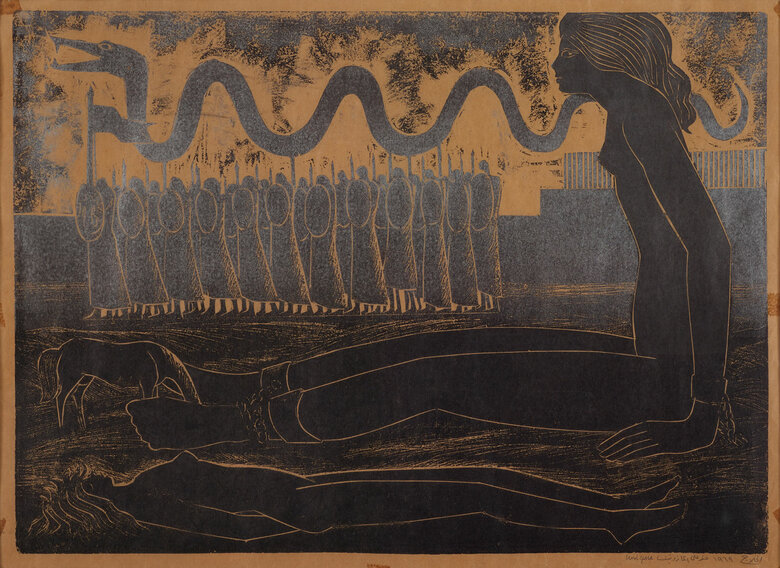Untitled, 1970, (The Battle of Al-Karmah) engraves a mythologized Palestine with intricate textures and symbolism, highlighting the artist's use of printmaking. The reproducibility and accessibility of printmaking were central to the Palestinian artists, thus serving as a tool for a revolutionary cause. El Hallaj produced many posters for the streets of Beirut, including this exact work. This print depicts a horse rearing over a narrow river bed, mouth open in a silent cry, ready to charge into battle. The work references the 1968 battle of Al-Karameh, where the Palestinian Liberation Organization (PLO) and Jordanian forces fought against the Israeli troops in the Jordanian town of Al-Karameh. Here, the Arabian horse's power and grandeur in battle symbolize revolutionary fighters' fearlessness. Beside the horse, a woman, personifying Palestine, aims a large gun upon which a bird is perched. The horse's mane and woman's hair flow long and wild, merging with the landscape and becoming one with the hills and textures, winding rhythmically with the topography. A snake slithers out of the river onto the left bank, forked tongue poised to bite.
The fact that El Hallaj, who was both a sculptor and printmaker, had adopted a migratory lifestyle by 1968 led him to focus primarily on woodcut printing due to its mobility and accessibility. He worked mainly with woodcut engraving, a printing technique where an image is carved into different types of wood, creating a relief print. The raised, uncut areas are inked and printed, while the cut-away sections remain blank. El Hallaj often used inexpensive materials like masonite, MDF, and plastic sheeting as plates, carving into them with crude tools such as nails. Over time, he refined his technique, eventually using a jeweler’s drill to engrave the masonite plates, which he could easily carry while traveling.
For El Hallaj, it was the duty of the Palestinian artist to "combat the self-denial and suffocation of cultural heritage that the Israeli occupation imposes." His depictions of a mythologized Palestinian past and future were meant to engender a new revolutionary politics. Visually, he interlinks the Palestinian land and their struggle with a preoccupation with the brutal displacement and ethnic cleansing of his people. This print exemplifies how El Hallaj used the medium of printmaking to connect his art with the broader struggle for Palestinian identity and resistance.
Signed in Arabic on the lower right front and numbered on the lower left front


